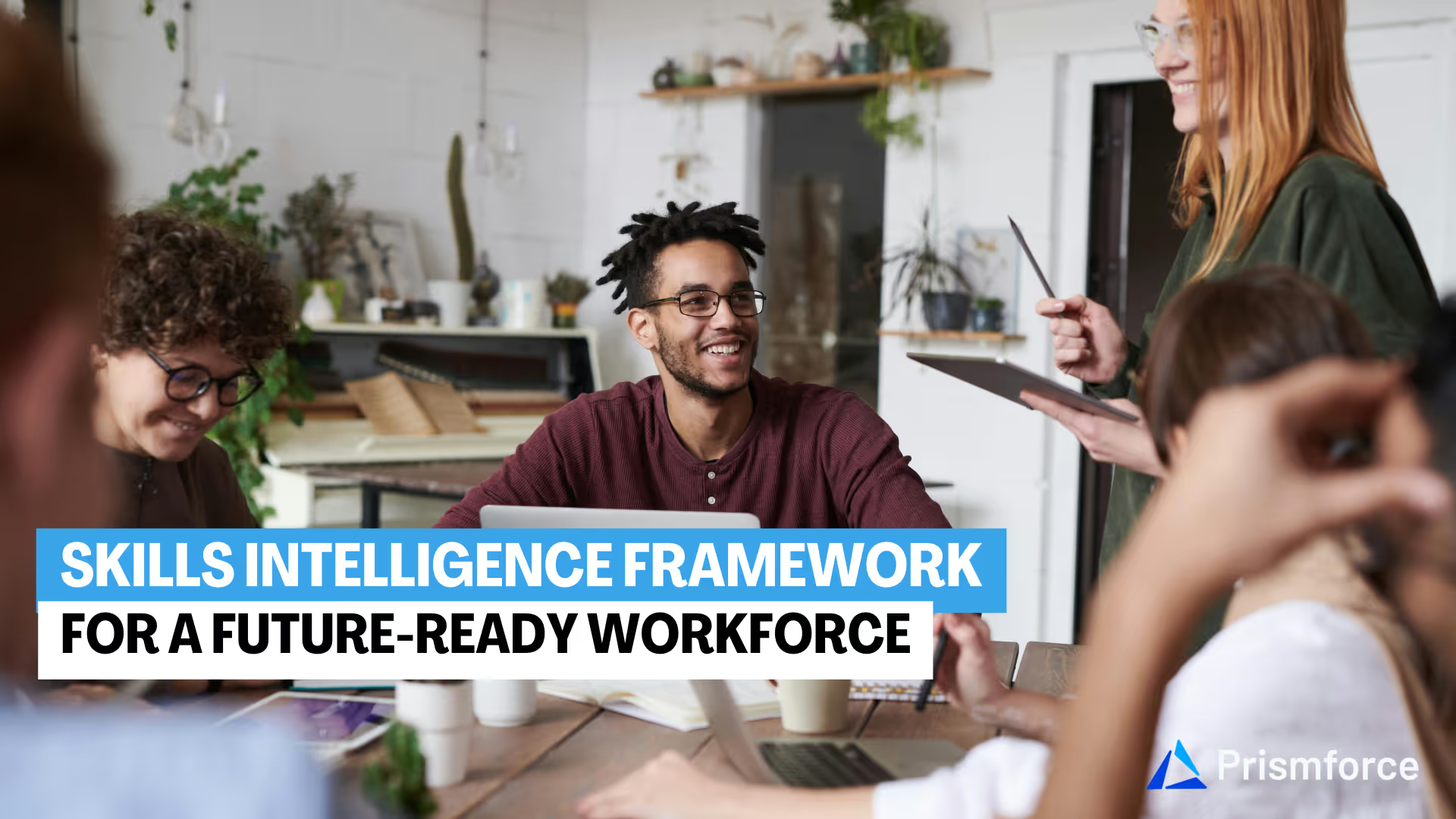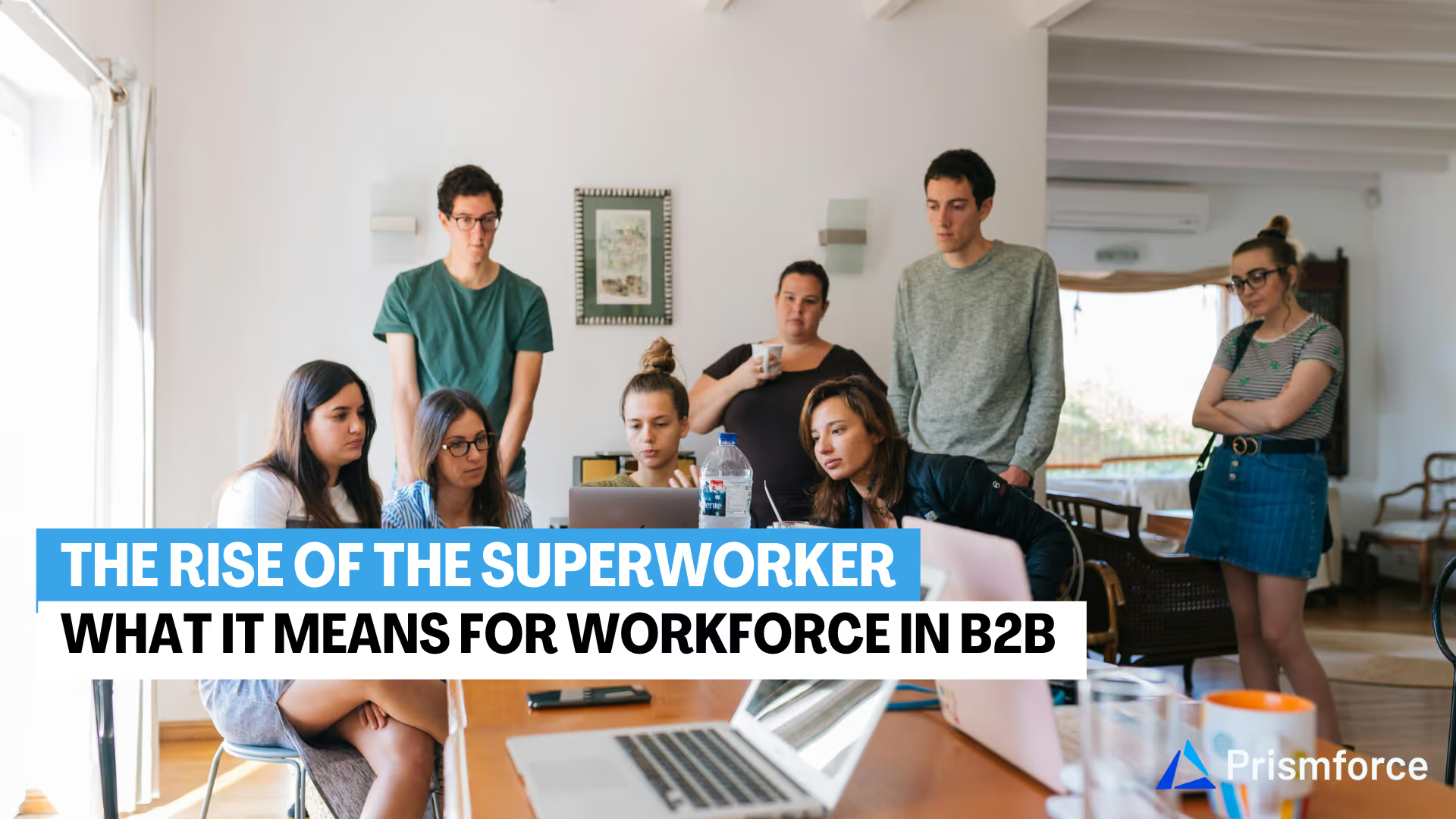
Organizations face unprecedented challenges in managing their workforce effectively. Emerging technologies, shifting market demands, and the ongoing skills gap create a pressing need for companies to rethink how they understand, measure, and develop employee skills. Enter the Skill Intelligence Framework—a revolutionary approach designed to transform workforce management by aligning talent strategies directly with business outcomes.
Companies leveraging skill intelligence frameworks report significantly higher productivity, improved employee engagement, and greater agility in response to market changes. According to a study, skill-based organizations are 107% more likely to position themselves effectively for future disruptions.
This article explores how adopting a Skill Intelligence Framework can empower HR and business leaders to make data-driven decisions, optimize their talent strategy, and cultivate a future-ready workforce poised to excel in any market condition.
What is Workforce Skills Intelligence?
Workforce Skills Intelligence refers to the strategic application of data, insights, and analytics to understand, track, measure, and manage the skills within an organization. It is a structured, intelligence-led approach that enables organizations to visualize the current capabilities of their workforce, anticipate emerging skill needs, and align these insights with business strategy to drive sustained growth and agility.
Unlike traditional HR approaches that rely on static job descriptions and periodic reviews, Workforce Skills Intelligence leverages real-time data from multiple sources—resumes, project histories, learning systems, assessments, and market benchmarks—to build dynamic skill profiles. It transforms skill management from a reactive task into a proactive, strategic capability.
Key Components of Workforce Skills Intelligence
- Skill Inventory Management: Capturing accurate, up-to-date, and comprehensive skill data, including proficiency, recency, certifications, endorsements, and use-case history.
- Skill Gap Analysis: Identifying the delta between current workforce capabilities and the skills needed to achieve short-term and long-term business goals.
- Market Intelligence: Benchmarking internal skill data against industry standards and external talent pools to identify emerging trends and competitive gaps.
- Predictive Analytics: Using AI and machine learning to forecast future skill demands based on business growth, technology evolution, and customer requirements.
Why is Workforce Skills Intelligence Important?
In a dynamic business environment, the ability to rapidly adapt to emerging trends and challenges is vital. Workforce Skills Intelligence empowers organizations by providing real-time insights and actionable data that enable leaders to make informed strategic decisions. It shifts talent management from reactive to proactive, allowing companies to anticipate change rather than simply respond to it.
Adapting to Changing Demands
Organizations face constant disruption from technological advances, shifting customer expectations, and market volatility. Skills intelligence enables companies to quickly identify emerging skills and reskill employees accordingly, ensuring the workforce remains agile and aligned with market demands. According to LinkedIn, 94% of employees would stay longer at a company that invests in their learning and development—demonstrating the business value of being responsive to skill needs.
Enhancing Innovation and Creativity
When employees are accurately matched to roles aligned with their capabilities and growth potential, innovation flourishes. Skills intelligence helps uncover hidden talents, align them with meaningful work, and foster a culture of experimentation and continuous learning. A PwC study shows that 55% of CEOs see a lack of innovation as one of the top threats to growth. Skills intelligence directly addresses this by ensuring employees are equipped and empowered to think creatively and act boldly.
Preparing for the Future
With the accelerating pace of digital transformation, preparing for future workforce needs has never been more critical. Workforce Skills Intelligence equips organizations with predictive capabilities that help foresee skill shortages before they become bottlenecks.
Boosting Internal Mobility and Retention
Workforce Skills Intelligence allows HR leaders to better match existing employees with open roles, projects, or stretch assignments—based on actual capabilities rather than assumptions or outdated job titles. This approach increases internal mobility, reduces time-to-hire, and boosts retention by offering employees clear growth paths.
Enabling Strategic Learning Investments
Rather than taking a one-size-fits-all approach to employee development, skills intelligence enables personalized and strategic learning journeys. It highlights which skills are most urgent and valuable based on organizational priorities, allowing L&D teams to direct investments where they will have the greatest ROI.
Supporting Agile Workforce Planning
As industries evolve and competitive pressures mount, organizations need to build, borrow, or buy skills with speed and precision. Skills intelligence supports agile workforce planning by surfacing data on capability supply and demand across the business. Leaders can model various scenarios, such as new product launches or geographic expansions, and proactively align talent strategies to future needs. This capability can mean the difference between thriving and merely surviving in a shifting landscape.
Implementing a Skills-Based Approach to Workforce Planning
Transitioning to a skills-based approach requires strategic alignment, robust analytics, and deliberate execution. Organizations that implement a structured skills-based workforce plan benefit from improved agility, enhanced employee development, and superior business outcomes.
Steps to Develop a Skills-Based Workforce Plan
Here's how you can build a comprehensive skills-first strategy for talent management:
Conduct Comprehensive Skill Mapping and Inventory
A robust skills-based workforce plan begins with extensive skill mapping. Organizations must use diverse assessment methods, surveys, and advanced analytics tools to identify and document the current skill sets, proficiency levels, and potential within their workforce. Gathering this detailed information provides a foundational understanding necessary for strategic talent decisions.
Perform In-Depth Skills Gap Analysis
Once comprehensive skill mapping is complete, the next crucial step involves conducting a thorough skills gap analysis. This step requires comparing current employee skills against the organization’s strategic objectives, performance requirements, and external industry benchmarks. A precise skills gap analysis enables organizations to clearly understand where deficiencies exist, informing targeted talent initiatives.
Establish Clear Skill Priorities and Objectives
With a clear understanding of existing skill gaps, organizations must prioritize these gaps based on urgency, strategic impact, and practicality of closing them. Prioritizing skill gaps ensures that immediate business needs are addressed first, which enhances operational effectiveness and supports strategic organizational growth. Clear objectives provide direction and clarity for workforce planning efforts, enabling effective resource allocation and strategic focus.
Design Targeted Learning and Development Programs
Organizations should develop customized training and upskilling initiatives specifically aligned with prioritized skill gaps. Targeted learning programs enable employees to acquire essential skills efficiently and effectively, directly supporting organizational goals. Tailored development initiatives also improve employee engagement and retention by demonstrating the organization’s commitment to individual career growth.
Implement Robust Predictive Analytics Tools
Predictive analytics tools are essential for forward-looking workforce planning. Organizations should employ sophisticated analytics and predictive modeling to forecast future skill demands based on industry trends, technological advancements, and projected organizational growth. Predictive analytics offer valuable foresight, enabling proactive workforce development and ensuring the availability of critical skills when needed.
Foster a Continuous Learning Culture
A successful skills-based workforce strategy demands a supportive, continuous learning culture. Organizations must actively cultivate environments that encourage ongoing skill development, innovation, and growth. By promoting continuous learning through resources, recognition, and rewards, organizations can sustain employee motivation, agility, and readiness to adapt to future skill requirements.
Monitor, Evaluate, and Refine the Plan Continuously
Continuous monitoring and evaluation are critical to the effectiveness of any workforce strategy. Organizations should routinely assess the impact and outcomes of their skills-based workforce plan, identifying strengths, weaknesses, and opportunities for improvement. Regular refinement based on ongoing insights ensures the workforce plan remains aligned with evolving business requirements and dynamic market conditions, fostering sustained organizational resilience and competitiveness.
Challenges in Implementing Workforce Skills Intelligence
While Workforce Skills Intelligence offers substantial benefits, organizations often encounter several challenges during implementation that require careful management and strategic foresight.
Data Collection and Analysis
Collecting accurate and comprehensive skill data can be complex and resource-intensive. Organizations must invest in robust systems and tools to capture, analyze, and maintain up-to-date skills data effectively. Additionally, data quality issues such as inconsistencies, inaccuracies, and incomplete information pose significant challenges that require standardized processes and dedicated data governance practices.
Integration with Existing Systems
Integrating Workforce Skills Intelligence platforms with existing HR and enterprise systems can be technically challenging. Organizations often face compatibility issues, requiring significant investments in custom integrations or middleware solutions. Furthermore, seamless integration is essential to ensure accurate real-time data flow, facilitate cross-platform analytics, and avoid creating information silos that undermine decision-making capabilities.
Ensuring Employee Engagement
Achieving employee buy-in is critical to the success of any skills intelligence initiative. Organizations must clearly communicate the value and benefits of skills intelligence to employees, addressing potential concerns related to job security and transparency. Actively involving employees in skill assessment, offering personalized development pathways, and recognizing skill progression through tangible rewards and acknowledgment can significantly enhance engagement and participation.
Change Management and Organizational Readiness
Introducing Workforce Skills Intelligence often requires a cultural and operational shift, which can be met with resistance. Legacy processes, entrenched mindsets, and a lack of digital readiness can hinder adoption. Without strong change management practices—such as executive sponsorship, stakeholder alignment, and continuous communication—implementation efforts can stall. Organizations need to ensure that leadership is aligned and that teams are equipped to adapt to new ways of working.
Lack of a Standardized Skills Taxonomy
A fundamental challenge in implementing Workforce Skills Intelligence is the absence of a universally accepted and consistently applied skills taxonomy. Many organizations rely on fragmented, outdated, or overly simplistic skill classifications, which fail to capture the breadth, depth, and nuances of employee capabilities. Without a coherent and dynamic taxonomy, it becomes difficult to conduct accurate skill assessments, track development over time, or benchmark against industry standards. Establishing and maintaining a living skills ontology is essential to realizing the full value of skills intelligence.
Solutions to Overcome Workforce Skills Intelligence Challenges
Addressing these implementation challenges effectively can significantly enhance the adoption and success of Workforce Skills Intelligence.
Leveraging Advanced Analytics and AI
Utilizing advanced analytics and AI enables organizations to automate data collection, ensure accuracy, and derive actionable insights more efficiently. Machine learning algorithms can analyze vast datasets to uncover patterns, predict skill needs, and suggest personalized employee development paths.
Building a Culture of Continuous Learning
Creating an organizational culture that emphasizes continuous learning and development is crucial. This involves leadership endorsement, allocating resources for training, recognizing and rewarding ongoing skill enhancement, and ensuring that continuous learning aligns clearly with career progression.
Collaborating with External Partners
Partnering with external experts, technology providers, and industry associations can accelerate implementation, enhance expertise, and deliver comprehensive solutions tailored to specific organizational needs. External partners offer valuable resources, industry benchmarks, best practices, and advanced technological capabilities.
Build a Solid Workforce with Prismforce
Effectively managing workforce skills intelligence can significantly enhance organizational agility, innovation, and future readiness. To fully leverage a skills-based strategy, organizations need robust, specialized tools. Prismforce delivers precisely this through its advanced and comprehensive skill management and talent optimization platform.
Prismforce – Your Complete Skills Intelligence Partner
Prismforce is an AI-driven SaaS solution specifically tailored for technology and professional services organizations. Its suite of specialized products—including SkillPrism, IntelliPrism, and InsightPrism—utilizes sophisticated AI and machine learning to redefine workforce skills management. Prismforce simplifies skill profiling, identifies skill gaps, provides personalized career and learning paths, and enables accurate demand-supply matching.
Key Features and Benefits
- Advanced Skill Profiling: Automatically generates highly accurate skill profiles with over 90% precision, significantly enhancing skill discoverability by 4-5 times.
- Intelligent Talent Matching: IntelliPrism enables precise skill-to-demand matching, cutting fulfillment times by up to 30% and improving internal fulfillment rates by over 20%.
- Comprehensive Learning and Development: Offers tailored, AI-driven learning paths and career development recommendations aligned with organizational needs.
- Insightful Analytics and Forecasting: Provides real-time, actionable dashboards and predictive analytics to anticipate skill demands and proactively manage workforce needs.
- Seamless Integration: Easily integrates with existing enterprise systems, ensuring smooth operational continuity and enhanced productivity.
By adopting Prismforce, organizations can streamline their talent management processes, make smarter workforce decisions, and cultivate a resilient, skilled, and future-ready workforce.





